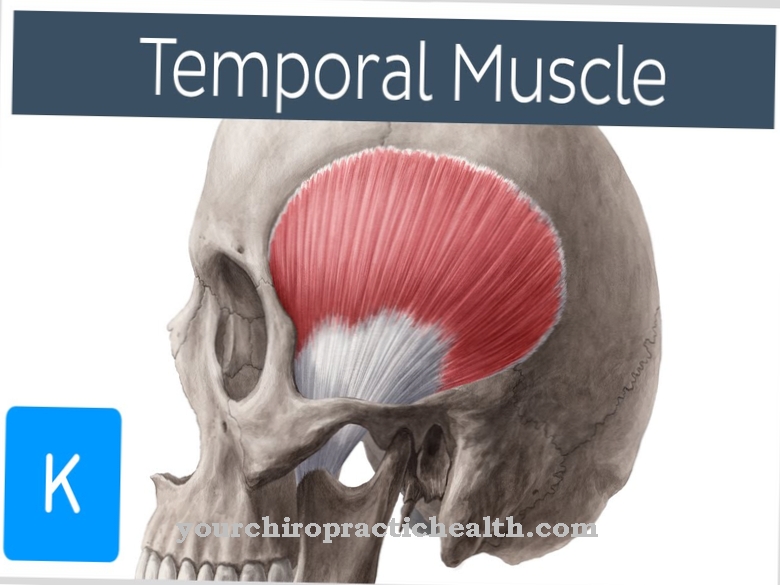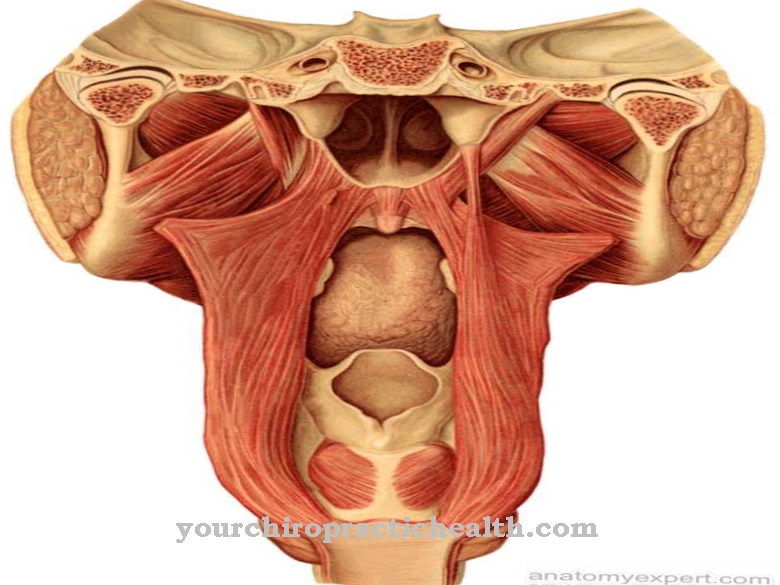The Mammary gland man sits in the female breast. Under the influence of the hormones oxytocin and prolactin, it produces and secretes milk to nourish the offspring. Disturbed milk production occurs mainly when the hormones involved fail.
What is the mammary gland?
Lactation of all mammals takes place with the help of the mammary gland. It is a skin gland of female mammals that specializes in milk production and secretion. These processes are relevant for feeding offspring and are hormonally controlled.
In humans, hormone release is stimulated by the interaction between mother and child. The most relevant lactation hormones are prolactin and oxytocin. The latter primarily stimulates the secretion of the milk produced. This production already begins in pregnancy. Mammary glands can be guided by tubular glands. During embryonic development, mammary glands arise on the basis of the milk ridge. Because they are located directly in the breast tissue in the human race, human mammary glands are called Mammary glands designated.
Due to their localization, human mammary glands belong to the thoracic mammary glands, which differ, for example, from the inguinal udders of a cow or the thoraco-inguinal mammary glands of a cat. The fine structure of the gland in humans depends on the woman's menstrual cycle and changes, for example, during pregnancy or breastfeeding. The mammary gland secretes apocrine. This means that with each drop of milk it releases a constricted cell cap into the lumen.
Anatomy & structure
The mammary gland of all higher mammals consists of individual glandular complexes called mammary complexes, each with a wart. The number of complexes depends on the species and correlates with the average number of newborns.
Every human mammary complex contains a completely isolated glandular system. In humans, up to 20 different streak canals open into each papilla. The cavity system of the mammary gland begins with blind-ended sacs, also known as alveoli, which correspond to the actual location of lactation. The alveoli are each connected to several draining ducts. All milk ducts open into the so-called cistern, which leads through the streak canal from the inside to the outside. The structure of the mammary gland is determined by the menstrual cycle and also changes with pregnancy and the breastfeeding period.
During breastfeeding, the human mammary gland is fully developed and the alveoli are equipped with a single-layer epithelium, which varies between cylindrical and flattened shape depending on the filling level. In the human breast there is a basket cell between an epithelial cell and the basement membrane. Small milk ducts also have an epithelium. Larger milk ducts have a two-layer epithelium and have smooth muscles in the wall. The cistern has a two-layer cubic epithelium and also carries smooth muscle fibers. The streak canals have a cutaneous mucous membrane with severe cornification.
Function & tasks
The task of the human mammary gland is the formation, transport and secretion of milk to nourish the offspring. Due to the hormonal influence of prolactin, milk is not only produced in the sacs of the mammary gland, but also stored. The prolactin is produced in the pituitary gland during pregnancy and stimulates milk production. The basket cells of the gland have a special ability to contract, which in turn is stimulated by the hormone oxytocin.
This hormone is increasingly formed in the pituitary gland from the time the child is born and primarily has an effect on secretion. The direct interaction with the child further stimulates the production of oxytocin and initiates the secretion of milk. The small milk ducts are equipped with a single layer of epithelium that forms additional milk. The larger milk ducts have smooth muscles in their wall that transport the milk. In addition, the smooth muscles form a sphincter muscle, which closes the gland together with its blood vessel plexus and its folds of the mucous membrane so that milk cannot drip off. Human mammary glands operate apocrine secretion and release constricted cell caps with the drops into the lumen during milk production.
Diseases
The mammary gland can cause problems in a number of ways. For example, under- or over-production of milk during and after pregnancy is related to abnormal pituitary gland activity. When the pituitary gland makes too little prolactin or oxytocin, too little milk is produced or secreted.
This phenomenon is known as hypolactation. The opposite is hyperlactation, which is due to an increased production of hormones in the pituitary gland. The most common causes of lactation disorders are benign tumors of the pituitary gland, which pathologically change hormonal activity. The mammary gland itself is also often affected by tumors. Tumors in this area are the most common neoplasms in women and often correspond to mixed variants of benign and histologically malignant tumors. Another disease of the mammary gland is mastitis.
This is an inflammation of the mammary gland. This pathological phenomenon is also widespread. Incontinentia lactis, which corresponds to a disorder of the milk holding capacity, is just as common. The glandular canal closes insufficiently in this disease. In most cases, this phenomenon is preceded by an injury to the chest, which has caused damage to the glandular ducts. Most of the mammary gland diseases mentioned here are common not only among humans but also among other mammals.

























.jpg)

.jpg)
